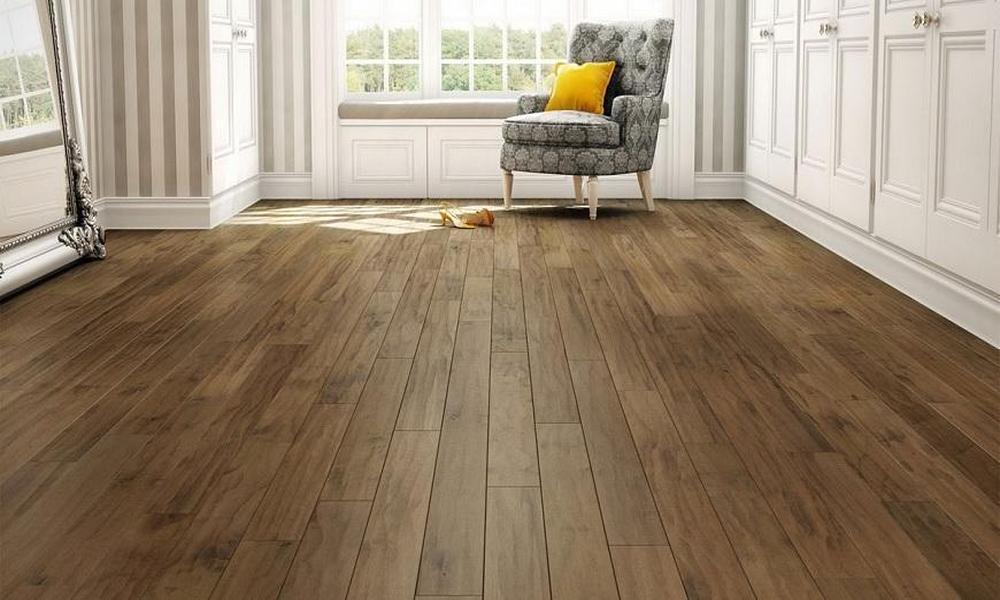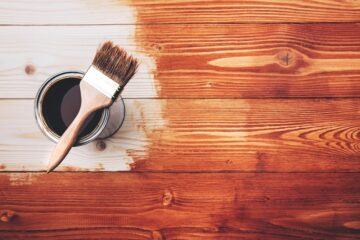
Several signs may indicate it’s time to refinish your wood floors. Here are a few things to look for:
Visible wear and tear: If your wood floors have scratches, dents, or other visible damage, it may be time to refinish them. Refinishing can help restore the appearance of the flooring and remove minor damage.
Fading or discoloration: Over time, wood floors can fade or develop uneven discoloration due to exposure to sunlight or wear and tear. Refinishing can help even out the color and restore the flooring’s original appearance.
Rough or uneven surface: If your wood flooring feel rough or uneven to the touch, it may be time to refinish them. Sanding and refinishing can help smooth out the surface and make the floors feel new again.
The finish has worn off: If the protective finish on your wood floors has worn off or is no longer providing adequate protection, it may be time to refinish the floors. This can help protect the flooring from further damage and extend its lifespan.
Squeaking or loose boards: If your wood floors are making noise or have loose boards, it may be time to refinish them. This can help address any underlying issues and prevent further damage to the flooring.
Overall, if you notice any significant wear or damage to your wood floors, it’s a good idea to have them inspected by a professional to determine if refinishing is necessary. Refinishing can be a cost-effective way to restore the appearance and extend the lifespan of your wood flooring.
Is wood flooring safe for pets and children?
Yes, wood flooring can be safe for pets and children, but it’s important to take a few precautions to ensure their safety.
Firstly, choose wood floorings that are durable and resistant to scratches and wear, such as hardwood or engineered wood flooring. This will help prevent damage from pets’ nails or children’s toys and ensure the flooring lasts longer. Secondly, consider the finish of the wood flooring. Avoid finishes that contain volatile organic compounds (VOCs), which can be harmful to pets and children. Look for finishes that are low-VOC or VOC-free. Thirdly, consider adding a rug or mat in high-traffic areas to provide extra traction and prevent slips and falls. This is especially important for children who may be learning to walk or run.
Finally, clean up any spills or accidents promptly to prevent damage to the wood flooring and to maintain a hygienic environment.
Overall, with the right precautions and care, wood flooring can be a safe and durable choice for homes with pets and children.
How do you protect wood flooring against scratches?
There are several ways to protect wood flooring against scratches:
Use furniture pads and area rugs:
Place furniture pads under the legs of tables, chairs, and other heavy furniture to prevent them from scratching the floor when they are moved. Place area rugs in high-traffic areas, such as hallways and entryways, to protect the wood flooring from scratches and wear.
Trim pets’ nails and Remove shoes:
Keep your pets’ nails trimmed to prevent them from scratching the wood flooring. Encourage family members and guests to remove their shoes when entering the house to prevent dirt, gravel, and other abrasive particles from scratching the wood flooring.
Sweep and vacuum regularly:
Dirt and grit can act like sandpaper and scratch the wood flooring. Sweep or vacuum regularly to remove dirt and debris from the floor. Applying a protective finish to the wood flooring can help prevent scratches and other damage. Be sure to use a finish that is appropriate for the type of wood flooring you have. Overall, taking these steps can help protect your wood flooring against scratches and keep it looking beautiful for years to come.
Porcelain Tiles: The Perfect Choice for Your Home
April 22, 2024Five Essential Tips to Maintain Paint Color on Wood
March 29, 2024Small Pools Are Very Beneficial. Know How?
February 7, 2024
Comments are closed.
-
Payment Methods: Tap vs. Swipe (An Explainer)
December 21, 2022 -
Benefits Of Adding Bike Racks To Your Commercial Space
January 2, 2022 -
Should You Buy Your Teenager Their First Vehicle?
October 15, 2021






